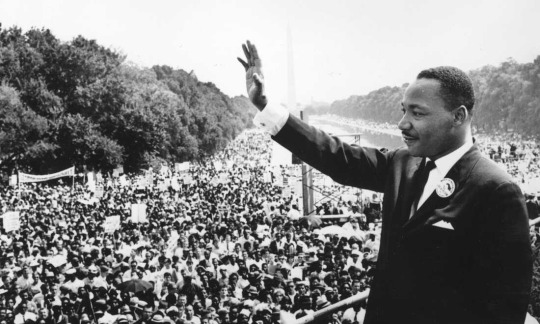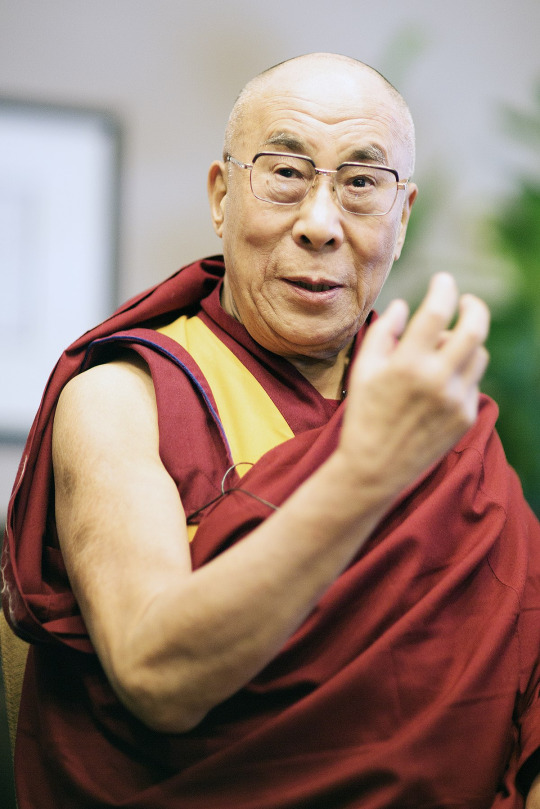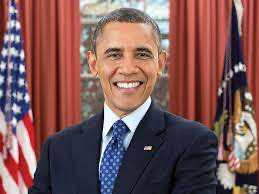#pacesetting
Explore tagged Tumblr posts
Text
i dont really play Sex Video Games very often, so i have a relatively limited list of experiences. that being said, i'm a dabbler. why not.
the very first one i ever played was a game jam demo really focused on allowing the player to have positive consensual sexual encounters that they could pause or stop at any time. i thought this was sweet but kind of unremarkable, because it seems intuitive that in a video game meant for the player's sexual gratification, the player should have ultimate control. not that they can make the developer tell a story they didn't write--this isn't a live encounter after all, there's technical limitations--but they ought to be able to enjoy the game at their own pace and, if the scenario is making them more upset than horny, back away at any time. i think the easiest way to accomplish this is being able to be sent back to the point before the encounter/pre-encounter autosave, but in some cases it would be interesting and very do-able to stop the scene diegetically.
anyways, I have not yet seen a single pornographic video game with this feature since that first one
#indexed post#My feeling is if it's a consensual encounter then altering the pace diegetically should be one of the player's major points of interaction#It might require writing some extra buffer text but like. Okay? More eroticism man what could go wrong#and if it's nonconsensual encounters then I think the player ought to have some kind of dev-sanctioned failsafe to ensure it's actually#/enjoyable/ to the player. since like. in this particular kind of game... isn't that the point?#A lot of these games are sort of impossible to win by skill too so a 'git gud' attitude isn't applicable and also is pretty unkind#Anyways if people do have examples of games that have interesting pacesetting or player control I'm curious but ultimately I think#This kind of game just isn't aligned with my sexuality and that's fine I guess
14 notes
·
View notes
Text
Lula and Petro have the chance of a lifetime to save the Amazon. Can they unite idealism and realpolitik to pull it off?
The South American leaders are in the spotlight as they prepare to host this week’s Cop16 biodiversity summit, November’s G20 meeting and next year’s Cop30 climate summit

The rainforest nations of Brazil and Colombia have the best opportunity in a generation to drag the Amazon back from the abyss as they host three of the world’s most important environmental negotiations in the space of little more than a year.
In the process, their leaders – pacesetting Colombian president, Gustavo Petro, and the more cautious and contradictory Brazilian president, Luiz Inácio Lula da Silva – will offer up overlapping visions for the future of the Amazon, and the world’s path to net zero.
But these leftwing leaders need to align differing views on oil exploration and the speed of change if they are to sway global environmental priorities. On this, there are genuine hopes, but also causes for scepticism.
For those seeking a solution to the world’s polycrisis, all roads lead from Cali in western Colombia to Belém in northern Brazil. Cop16, the global biodiversity summit, opens in Cali next week, followed by the G20 summit of major economies in Rio de Janeiro in mid-November, where Lula will bet on a trifecta of environmental justice issues: energy transition, sustainable development and the fight against hunger. A year later, he will follow up on a bigger stage: the Cop30 climate summit in Belém.
Continue reading.
#brazil#brazilian politics#politics#colombia#colombian politics#environmentalism#amazon rainforest#luiz inacio lula da silva#gustavo petro#image description in alt#mod nise da silveira
8 notes
·
View notes
Text

AllMusic Staff Pick: Return to Forever / Chick Corea Where Have I Known You Before
This Return to Forever set, celebrating its 50th anniversary this month, finds guitarist Al DiMeola debuting with the pacesetting fusion quartet, an influential unit that also featured keyboardist Chick Corea, electric bassist Stanley Clarke and drummer Lenny White.
- Scott Yanow
2 notes
·
View notes
Text
A good leader motivates and guides employees to encourage them work towards achieving goals and objectives of the organization or group. Most employees would like to work in an organization with senior executives that are able to appraise the requirements of staff and adopt suitable leadership styles that befit the team members. The senior executives of Unilever Company exercise more than one leadership styles that energize and motivate staff across departments. They value democratic, visionary and pacesetting leadership styles. In democratic leadership, the managers allow employees to voice their opinions and views. The style encourages staff to participate in matters that affect them and the company. Also, the management can envision the future, reveal what could be, and encourage employees to perceive things way they unfold. In the other words, visionary leadership helps to achieve distant dreams. In addition, Unilever executives set the rate or pace of accomplishing the predetermined goals of the company. They exercise a pacesetting style of leadership to achieve goals of the company (Springer, 2013). 2. The leadership style differs from one organization to another. This is because of the adoption of different organizational structure and culture. In regard to growing specialization and division of labour, most people would like to work in an organization that has a functional structure with both adhocracy and hierarchy oriented cultures. A functional structure is easy to run and manage because similar portions of the organization are grouped together according to their purposes. In this organization, there are different departments entrusted with specific functions. Each department relies on the knowledge and talent of its workers. Therefore, teamwork plays a major role in this type of organization. An organization with a hierarchy oriented culture can focus on stability, efficiency and doing things right. Also, an adhocracy culture enables the organization to focus innovation, risk- taking and doing things first. These two organizational cultures facilitate team development, and employees’ participation and democracy. There is a strong interpersonal relationship due to teamwork and job specialization (Gerybadze, 2010). 3. In Unilever Company, executives embrace a high level of ethics. They know their responsibilities and emphasise the same to employees. They make sure that they follow set policies and make the right decisions. They hold every staff accountable to encourage them know what is expected of them ant take their responsibilities seriously by completing their job description correctly. These executives also encourage continuous work ethics training and professionalism. In ethics training, employees are taught how to react and act professional. Read the full article
0 notes
Text
Governor Peter Mbah’s Administration Unveils Landmark Climate and Renewable Energy Strategies
In yet another pacesetting move, the Enugu State Government under the leadership of Governor Peter Mbah has approved the Enugu State Climate Policy and Action Plan, ESCPAP, making it the first subnational government in Nigeria to adopt a long-term climate strategy that incorporates emissions modeling, microenergy audits, and extensive stakeholder engagement. In the same vein, the State Executive…
0 notes
Video
youtube
1981 MAX ROACH & tap dancer HAROLD NICHOLAS of the NICHOLAS BROTHERS
MAX ROACH DAY JANUARY 10, 1924 – AUGUST 16, 2007
A BIRTHDAY TRIBUTE TO AN ALL-TIME JAZZ GREAT
Drummer Max Roach was born on January 10, 1924 in Newland, North Carolina.
Roach, who grew up in Brooklyn, started on the drums when he was ten and studied at the Manhattan School Of Music.
He was in the house band at Monroe’s Uptown House in 1942, getting opportunities to jam with Charlie Parker and Dizzy Gillespie who both recognized his forward-looking talents.
Roach made his recording debut with Coleman Hawkins in 1943 (and was on Hawkins’ pioneering bop sessions the following year), worked with the Benny Carter Orchestra, and played on 52nd Street with Gillespie.
With Kenny Clarke (who was the first bop drummer) in the service, Roach built upon his innovations and was quite busy during the second half of the 1940s including working with Stan Getz, Allan Eager, Hawkins, the Charlie Parker Quintet (1947-49), Miles Davis’ Birth of the Cool Nonet (1949-50) and virtually every name in modern jazz including with Parker and Gillespie at the famous 1953 Massey Hall Concert.
He co-founded the Debut label with Charles Mingus in 1952 and worked with Louis Jordan, Red Allen, the Lighthouse All-Stars and Jazz At The Philharmonic.
During 1954-56, Roach co-led a pacesetting quintet with Clifford Brown that by late-1955 included Sonny Rollins; after Brown’s tragic death other members of the group included Kenny Dorham, Ray Bryant, Booker Little, Tommy Turrentine, Freddie Hubbard, Hank Mobley, George Coleman, Stanley Turrentine, Clifford Jordan, Julian Priester and Roach’s wife singer Abbey Lincoln.
One of the most respected and skilled jazz drummers of all time (and a master at using space as he built up his solos), Roach continued leading groups for the remainder of his life including a long-time quartet with Odean Pope, Cecil Bridgewater and Tyrone Brown, the all-percussion group M’Boom, the Uptown String Quartet, and special duo albums with the likes of Cecil Taylor, Anthony Braxton and Archie Shepp.
Here is Max Roach accompanying and interacting with dancer Harold Nicholas in 1981.
-Scott Yanow
1 note
·
View note
Text
Essential Immediate Actions for Post Knee Replacement Surgery Recovery

Ensure successful recovery post knee-replacement surgery with our comprehensive guide. Learn to manage pain, exercises for strength recovery and avoid strain. Follow our tips for care, movement and medication as suggested by healthcare professionals. Help your healing process and regain strength now. Find relief from chronic orthopedic conditions. Schedule an appointment with our pacesetting orthopedic specialist in Mumbai. Excellence in care.
For more information : https://posts.gle/X58rDy
#For more information : https://posts.gle/X58rDy#kneereplacementrecovery#kneereplacement#kneereplacementsurgery#kneesurgery#kneepain#kneeinjury#jointreplacement#totalkneereplacement#knee#kneesurgeon
0 notes
Text
CELEBRATING 64 YEARS OF HOME-GOING OF APOSTLE JOSEPH AYO BABALOLA!!!
Today marks 64 years exactly that Africa’s apostolic legend of Faith and pioneer of Pentecostalism, in the person of Apostle Joseph Ayo Babalola took the bow and entered the pinions above. The Pentecostal world and of course the general Christian population in Africa is indebted to the apostolic efforts and pacesetting/trailblazing initiatives of this giant of Faith. Apostle Babalola stands tall…

View On WordPress
0 notes
Text
Poetry Corner
Tell me this doesn't sound like a most unlikely training regime for the Skatebirds when all is said and done:
Doing some training on some isolated stretch of road somewhere in "the boonies" of Nevada-- say, on that stretch of US 50 otherwise known as "the Lonesomest Road."
No doubt the sort of milieu as would dictate where Knock-Knock, Satchel and Scooter would NEED sunglasses all the more, and polarised sport-type such at that.
And talk about an unlikely pacesetter-- no less than The Mystery Machine of Scooby-Doo and crew, all because they were "in the neighbourhood" more than anything.
Not to mention being fellow Funtastics, requiring such to look out for each other in such a true funtastic sort of spirit more than anything.
Or would it be too much to picture as pacesetter the Invisible Motorcycle of the Hair Bear Bunch, in its Luscious Glory of defiance of physics (and, again, more out of convenience than all else?)
But at least when you're on inline skates and seek to pull off something of a comeback-- what else could matter?
Remember, your comments and poetic offerings are welcomed for consideration in this space every Sunday.
*************
@warnerbrosentertainment @screamingtoosoftly @themineralyoucrave @bottlecap-press @cottoncandy-wannabe @thebigdingle @theweekenddigest @xdiver71 @wackology @restroom @nighttimehound @jellystone-enjoyer @thylordshipofbutts @tallcharlie @warnerbros-blog1
#hanna barbera#poetry#poesy#call for poetry#skatebirds#inline skating#performance training#the lonesomest road#pacesetter#the mystery machine#the invisible motorcycle#unlikely crossovers#pacesetting#scooby doo#hair bear bunch#hannabarberaforever
0 notes
Text
Leadership plays a very essential role in every organization. Leaders act as change agents within organizations. They motivate as well as build the trust and confidence of the people within the organization. This report aims at understanding the various approaches to leadership that have been developed over the past. The aim of this report is to gain a clear understanding of the traditional concepts and approaches to leadership. Also focus will be drawn to the development of the concept of charismatic leadership and how it fits in to the general theories on leadership. A focus will also be made on how the ‘new genre of leadership theory’ has been taken up and further developed since 1992 by House and other researchers. The next section will detail the traditional theories that have been set down in the past. Leadership Theories There have been a number of different theories and approaches that have been developed in the past by various authors and experts in the field. This section will detail the various theories which will allow getting a clear understanding of the concept. The various authors and their theories are as follows: a) Daniel Goleman’s Approach: Daniel Goleman’s approach consists of six major styles of leadership. In his book Primal Leadership, he has highlighted that good leaders are effective because they create resonance. Based on this he explained resonance can be done in six ways, which in turn lead to the leadership styles. These styles included visionary leadership, coaching leadership, affiliative leadership, democratic leadership, pacesetting leadership and commanding leadership (Goleman, 2006). According to Goleman, all leaders’ categories into these styles of leadership, and the most useful type of leadership among these the visionary leadership style. Here the leaders inspire employees and believes in its own vision, along with being empathetic. It also highlights how the efforts from all the people within an organization, contribute to the ‘dream’. This type of leadership style has proved to be the most beneficial for companies where change is required and a new vision is required (Goleman, 2006). The other styles that Goleman has discussed within his book are the coaching style, which falls in the second best style of leadership for companies. This method is where the leaders are listeners and helps people identify their strengths and weaknesses, and in a number of aspects they also act as counselors, encouragers and delegates. This has proved to be the second best method of leadership and is most effective to help competent and motivated employees to improve their performance (Goleman, 2006). This is mainly done by building long – term capabilities. The other four styles as expressed by Goleman have not proved to be very useful to companies and are mainly to help motivate employees during stressful times. These help build a support for employees to get higher results like in the case of sales and finally in cases of severe crisis. The next section will detail the approach provided by Warren Bennis. b) Warren Bennis’s Approach: Warren Bennis also known as ‘The Father of Modern Leadership’ as per the Fortune Magazine has created a strong image in the contemporary leadership styles and no study of leadership will be complete including his finding and research (Crosby, 1997). According to him, leaders pull rather than push, and have the ability to empower and trust others to act. Also with a clear vision in their minds, they rightly communicate the vision to all the teams (Bennis, 1999). Leaders also work through teams and not based on hierarchies. Also it has been noted that leaders have stringer self confidence and self esteem, along with a positive attitude. It is also to be noted that leaders have a good grasp of self and they understand their strengths, develop their skills and also have a clear idea of how to use their talents Read the full article
0 notes
Photo

How do I stay at a pace I set? How do I set that pace? A rhythm , a routine - where I am cared for, and I care fort hose that matter to me ?
0 notes
Video
tumblr
Living it up in Los Angeles! Trig's President was invited to attend an invite-only Leadership Summit on the West Coast! It was great spending time with top performers from across the nation, learning from industry leaders and checking out local hotspots! ☀️✈️🌊
#Trig#Columbus#travel#business trip#Leadership Summit#industry leaders#paceset#invite-only#star treatment
0 notes
Text
Identify which Type of Leadership You Are
We are all leaders all the time, sometimes you might just not aware of it. Let us to find out what capability you got!
The 6 Goleman Leadership Styles:

Visionary Leader:
You can find this type of leader most in multinational corporations. They are capable to predict what is going to happen in the future. "Come with me" is their logo. They are self-confidence, empathy, high-level IQ.
The best scenario adopts:
When you are leading a group with a great goal, it needs you to have a pair of “bird-eyes".
Example:

Martin Luther King Jr.
2.Coaching Leader
As coaches in a basketball team, they are always trying to help the team to discover the most potential opportunity. "Try this" is their logo. They are also empathy and also have the ability of self-awareness.
The best scenario adopts:
When the team which you are in has lost aims, you can step out. Acting hard but also empathy to your teammates.
Example:

Red Holzman
3. Affiliative Leader
If you think yourself are incredible kindly in most of time, then you are might the type of affiliative leader. "People come first" is their logos. They always thinking about how to deal with people in a better way that reduces conflicts. The psychologist might take this.
The best scenario adopts:
You are a peace-lover, this leadership functions when the environment is harmony no crisis.
Example:

Dalai Lama
4. Democratic Leader
As it says democratic, it means popular. The people choose them to run certain businesses, they are representatives. You can find which people are capable without knowing they well.

Barack Obama is an example of a democratic leader.
5. Pace-setting Leader
Challengers as the pace-setting leader. They seem always energetic, never need to take a breath. And also, they motivate the team as always.

Lee Kuan Yew is a Pacesetting leader.
Commanding Leader
Commander. They got the well-established rule in their minds. High-level of capability of executive, always calm and thoughtful. You might find they are not easy to approach even you know they for a while.

Winston Churchill is an example of a Commanding leader.
Which type of leader would you choose for scenario 1?
Rather than checking everyone’s KPIs and detailed progress or requesting them to show a weekly update on their action plans, I go around the table and ask if they have any topics for the meeting. Each person names any topics that they want to be handled at the meeting. The topics could be important news, information sharing, an unresolved problem, a customer complaint, a logistical issue, or pretty much anything.This way, the entire group does not sit idle while a topic for two individuals is discussed in front of the others. In one hour, we have shared vital information in the team, had the opportunity to ask for input, agreed on additional meetings, etc.
So, why do I see this as a democratic leadership example? Here are a few reasons:
Everyone gets their opportunity to bring up what is important to them
We quickly decide on the next steps by any team member suggesting a natural next step in a consensus direction. Rather than voting, we ask if anyone is against or has a better idea.
All team members get a rough understanding of what is going on in all areas of the organization and get the same information, which builds transparency
Although speedy and efficient, anyone can halt the process if they disagree on something
Everyone has the opportunity to ask questions or come with ideas, even if it is outside of their specialization or area of control.
Scenario 2:
It may seem reasonable to argue that it’s best to focus on the strengths of a team and use them to the organization’s advantage. However, the weaknesses of a team can threaten everything an organization has built. This makes it very important for these weaknesses to be addressed.
() leader are able to quickly identify a team member’s weakness and implement a plan to help that team member transform that weakness into a strength or at least create awareness of the weakness so consequences can be limited. All team members have weaknesses. It’s all about identifying those weaknesses quickly and helping each team member improve in the best way possible.
You are very welcome to comment below to share with us what leader you are.
4 notes
·
View notes
Text
Stand up for God’s Word

…Josiah read in their hearing all the words of the book of the covenant… (2 Kings 23:2).
The leader must go first.
The leader must go big.
The leader must be visible.
The leader must be consistent.
This is the only way to affect real change.
Josiah did this extremely well. In fact, he did it better than any other king!
Josiah called all the people together and read “in their hearing” God’s word. Then he made it his own and took a public stand to confirm it (v. 3). Josiah went first, and “then all the people pledged themselves to the covenant.”
The rest of Josiah’s reign is punctuated by telltale phrases like:
in accordance with the Word of the Lord
as it is written in this book of the covenant
fulfilled the requirements of the law
Here’s one of the most amazing things to me: Josiah’s wholehearted obedience to God ends up fulfilling perfectly a 300-year-old prophecy that God gave through a prophet of Judah (v. 16; 1 Kings 13:1-3).
A mark of a godly leader is his public alignment with God’s Word.
When the leader goes public and then wholeheartedly follows through on his commitment to God, others will follow his lead. May all of us be that kind of pacesetting leader.
This is part 51 in my series on godly leadership. You can check out all of my posts in this series by clicking here.
8 notes
·
View notes